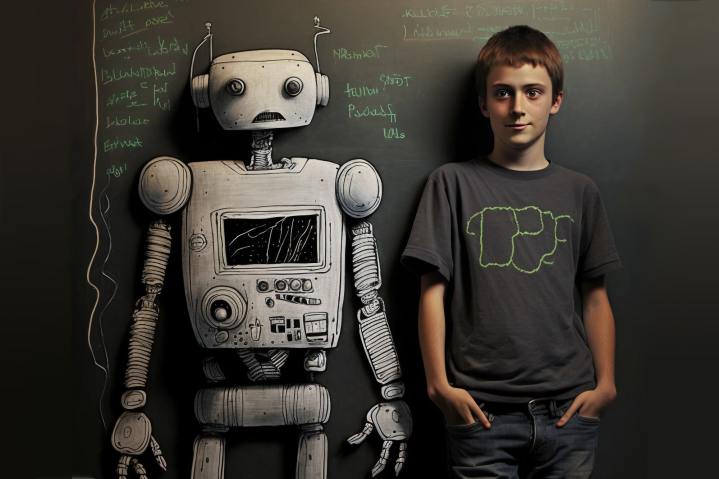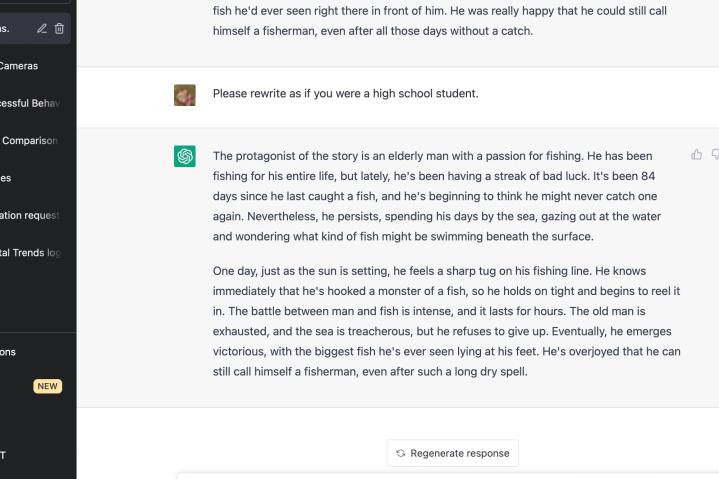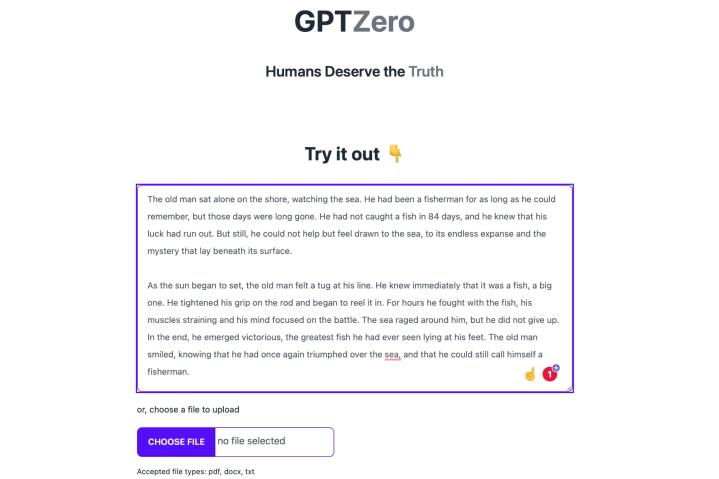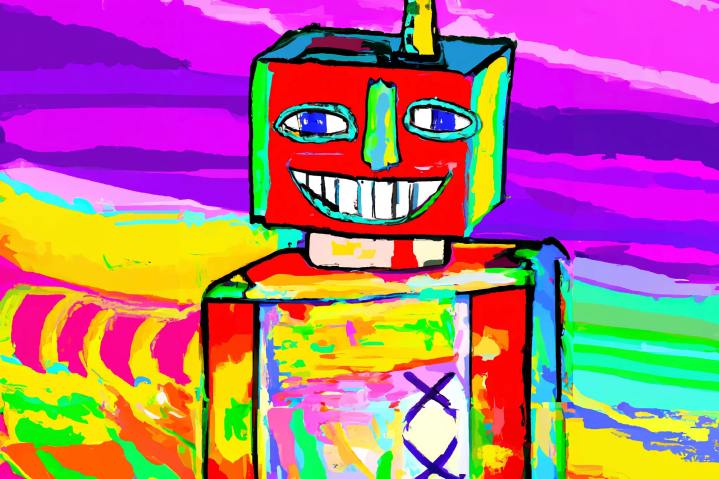In terms of world-changing technologies, ChatGPT has truly made a massive impact on the way people think about writing and coding in the short time that it’s been available. Being able to plug in a prompt and get out a stream of almost good enough text is a tempting proposition for many people who aren’t confident in their writing skills or are looking to save time. However, this ability has come with a significant downside, particularly in education, where students are tempted to use ChatGPT for their own papers or exams. That prevents them from learning as much as they could, which has given teachers a whole new headache when it comes to detecting AI use.
Teachers and other users are now looking for ways to detect the use of ChatGPT in students’ work, and many are turning to tools like GPTZero, a ChatGPT detection tool built by Princeton University student Edward Tian. The software is available to everyone, so if you want to try it out and see the chances that a particular piece of text was written using ChatGPT, here’s how you can do that.
What is GPTZero?

GPTZero is a web app and service designed to detect whether a body of text has been written by a human or by an artificial intelligence. Tian, a 22-year-old undergraduate studying computer science at Princeton University, and a former software engineering intern at Microsoft, is the developer of GPTZero.
GPTZero was first announced via Tian’s tweet on January 2, 2023, as a tool to help detect AI plagiarism. Tian noted that the analysis was based on the research of Princeton Ph.D. candidate Sreejan Kumar and the work of Princeton’s Natural Language Processing Group.
the analysis is based on some ongoing research with and @sreejan_kumar and @princeton_nlp. hopefully we'll publish something empirical soon. but in the mean time this was a fun app to make :)
— Edward Tian (@edward_the6) January 3, 2023
Is GPTZero free?
GPTZero was designed for educators, but anyone can use it for free. It’s unlikely that this will always be the case. The terms of service mention that there could be fees for some services. There’s also a mention of a 30-day free trial for new users that register.

GPTZero is not an open-source project, and Tian would be facing high hosting fees if not for the help of Streamlit, a Python app framework with a free cloud service for Streamlit apps. While GPTZero’s traffic is a tiny fraction of what ChatGPT enjoys, even OpenAI decided to start charging to offset its costs.
Although Streamlit hosting is free, that usually limits bandwidth and resources on this shared platform. That would have restricted the usage of a popular app like GPTZero.
Streamlit is currently assisting Tian by increasing the application memory and hosting allowance of GPTZero. If it continues to grow at a rapid pace, that could change.
thanks @DataChaz and rest of the @streamlit team for generously upping gptzero’s hosting and memory :))
— Edward Tian (@edward_the6) January 4, 2023
Is GPTZero accurate?
There have been claims that GPTZero can be fooled. Following a suggestion from Reddit user Smellz_Of_Elderberry, I asked ChatGPT to write a brief story about the book The Old Man and the Sea as if it were a high school student. GPTZero wasn’t fooled.

I tried again, altering the text with some misplaced punctuation, incorrect verb tense, and other small errors, but GPTZero still stated, “your text is likely to be written entirely by AI.”
The key word here is “likely,” and the developer never promised that GPTZero was perfect. The accuracy of GPTZero is still being assessed, but anecdotally, it seems to be working well for most people.
If you use GPTZero, it’s important to bear in mind that errors are possible. When using GPTZero to detect AI or ChatGPT to help write a document, you still need to check the work for mistakes.
How does GPTZero work?

GPTZero analyzes the randomness of text, known as perplexity, and the uniformity of this randomness within the text, which is called burstiness in statistics. An AI is very consistent in its perplexity and burstiness, while human writers vary those characteristics without any awareness.
The work isn’t done, and Tian notes that more tests will be added to improve the accuracy of AI text detection. In particular, implicit bias is an area being explored as another way to detect if the text is generated by an AI.
we're still studying implicit bias in LM generated text right now, so hopefully will be adding a few more tests and factors to improve the model
— Edward Tian (@edward_the6) January 3, 2023
How can I use GPTZero?
GPTZero is available on its website or via an application programming interface (API). To use the website, simply copy the text you’d like to check and paste it into the big box labeled Try it out.

It’s also possible to upload a PDF, Word document, or text file and click the Get Results button. You’ll also need to check the box signifying that you agree to the terms of service.
Why is my writing being flagged as AI?
Along with the rise of ChatGPT and the rise of AI detection tools, now both writers and readers have a new worry about how to tell if content is AI-created and whether genuine writing is being labelled as coming from an AI. This is particularly a problem for students, who could face consequences from their schools or universities if they are found to be using AI. Some students are now habitually running their own original work through detectors like GPTZero and finding that it is flagging up sentences as AI written even if they weren’t.
In 2024 a writer for The Atlantic, Ian Bogost, described running his own original work through plagiarism detection software and finding that initially, a staggering 74% of his work was flagged as plagiarized. With careful checking and elimination, he managed to get that number down to zero, but it took him several hours of review and settings adjustments to get there.
AI detection is similar to plagiarism detection, in that both can only reflect the best guesses as whether a piece of writing is original and human generated or not. And these tools require a lot of careful review, as both can tend to produce false positives. If you’re finding that your work is being flagged as AI-generated on GPTZero when it wasn’t, then this could be for reasons as broad as not being a native English speaker, being too repetitive with your ideas, or having used a tool like Grammarly.
If your work is being flagged as AI, double check that you have all your quotes and citations formatted properly, and try to avoid using automatic tools like Grammarly for making edits.
Do we really need plagiarism checks?
Pushing far beyond the research lab that many text-generation AIs have been bound to, OpenAI released ChatGPT to the public in late November 2022. By January 2023, ChatGPT had over 100 million users, making it the fastest-growing public application yet.
That means any concerns about plagiarism are only going to increase as this AI assistance becomes available in all corners of life. Microsoft is incorporating OpenAI’s technology into Bing search, and Google is testing its own version, known as Gemini (formerly Bard).

On a related note, AI image generators like Dall-E and Stable Diffusion are under scrutiny for potential copyright violations. All of these artificial intelligence services have been trained on the writing, photographs, and artwork found online that have been created by billions of humans.
In a way, AI is borrowing from human intelligence, not creating on its own. If I borrow from another human, I must give credit and possibly pay a licensing fee. With generative AI, it becomes more difficult to cite a source because each text or image is broken down into diffuse elements and then reassembled to create a new piece using thousands or millions of sources.
We either need to rethink how we feel about copyright and plagiarism or find tools that help identify AI-generated material and possibly develop a method of giving credit to the vast number of people that contribute to every AI-generated work.
Editors' Recommendations
- Copilot: how to use Microsoft’s own version of ChatGPT
- Is ChatGPT safe? Here are the risks to consider before using it
- Reddit seals $60M deal with Google to boost AI tools, report claims
- The best custom GPTs to make ChatGPT even more powerful
- This one image breaks ChatGPT each and every time




